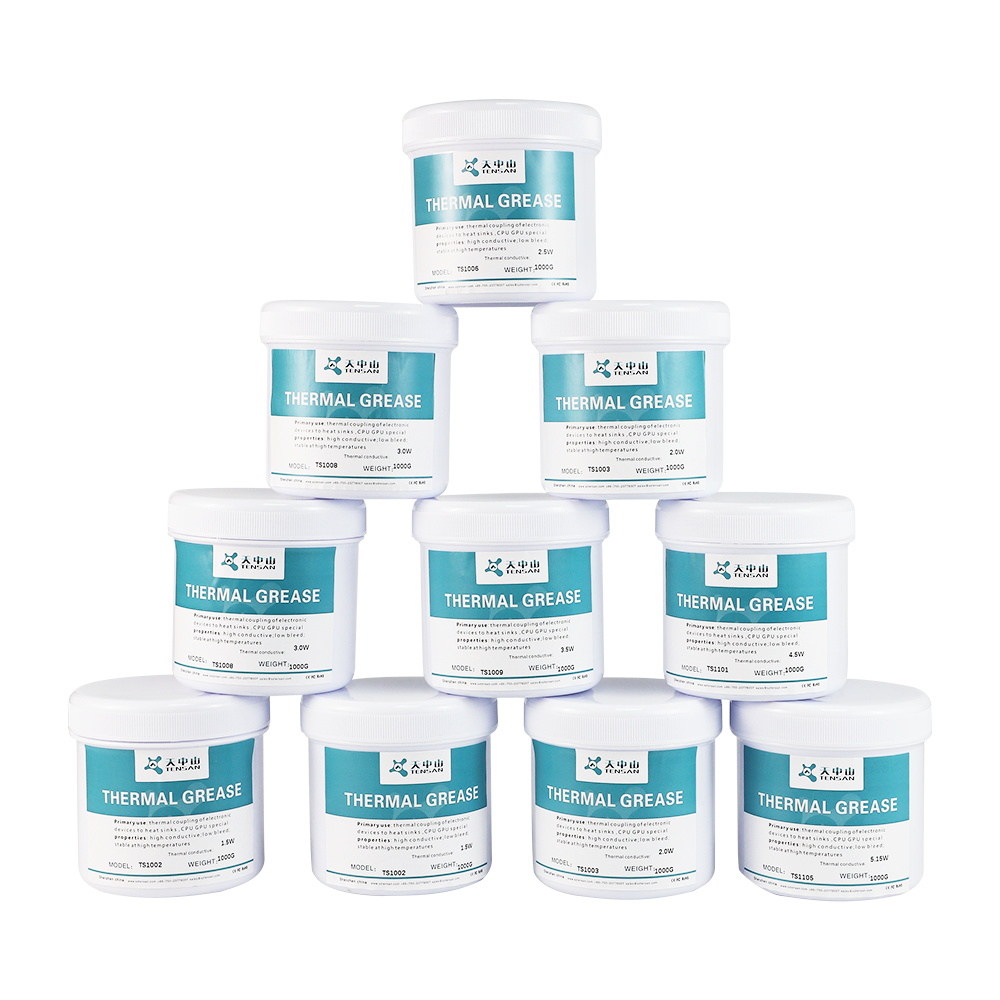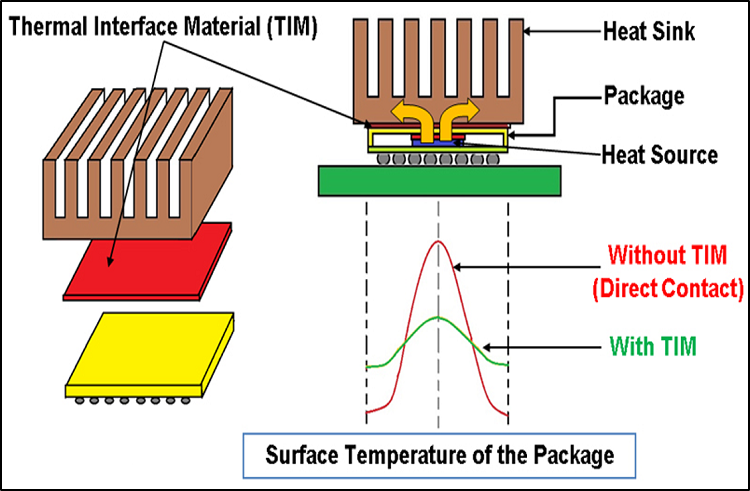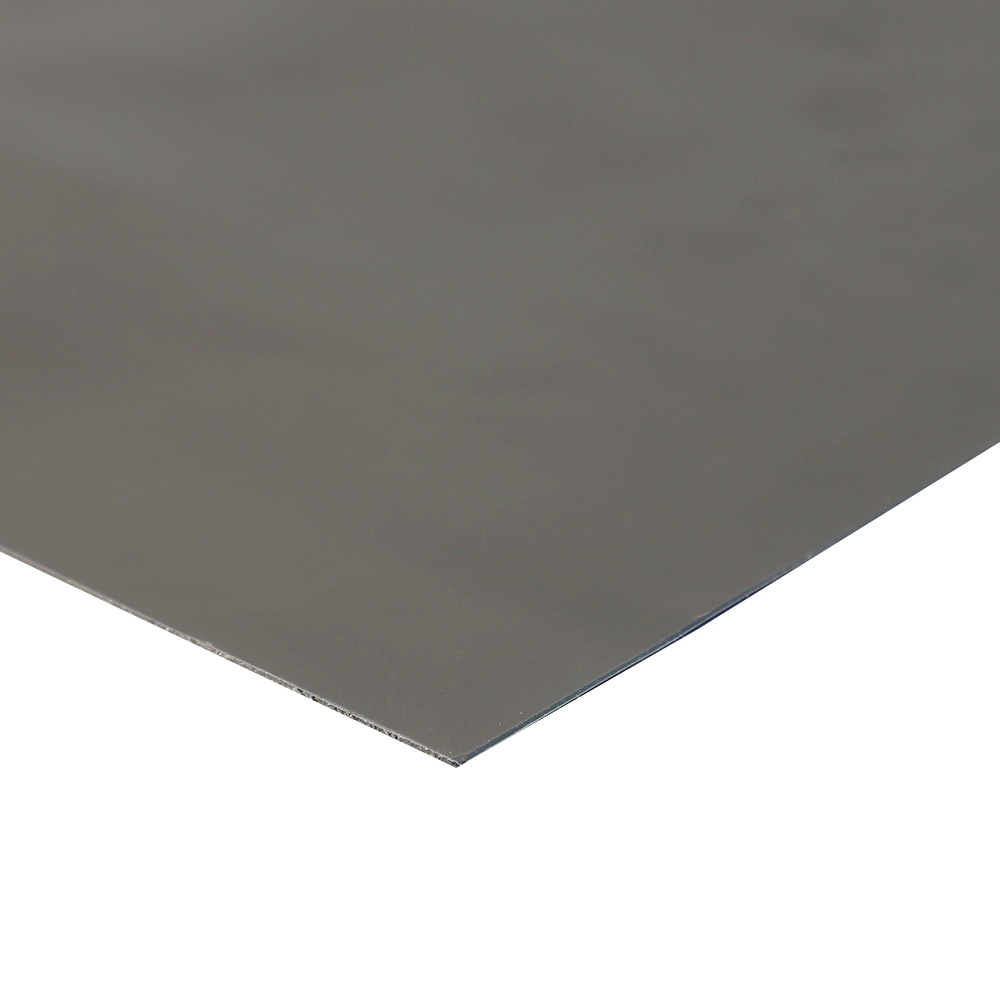When the electronic equipment is working, the components will generate a certain amount of heat, which causes the internal temperature of the equipment to rise rapidly.
If the heat is not dissipated in time, the temperature of the equipment will continue to rise, and the components will also fail due to overheating, which will cause the reliability of the electronic equipment to decrease or damage.

The heat dissipation method can be simply divided into active heat dissipation and passive heat dissipation (conduction, convection and radiation).
Thermal design engineers will select appropriate heat dissipation methods and thermal conductivity materials according to the heating conditions.
When choosing a heat transfer medium, not only must consider its heat transfer capacity, but also take into account factors such as production process, convenience in use, maintainability and cost-effectiveness.
Currently commonly used thermal interface materials are:
Thermal Pad, Electrically Insulating Thermal Sheet, Thermal Conductive Gap Filler, Thermal Grease, Thermally Conductive Potting Encapsulant.
The following is a brief description of the characteristics of these types of thermal conductivity materials and the indicators that need to be paid attention to when choosing:

A thermal interface material with high softness, high compliance and high compression ratio. It can fill the gap between the heating element and the radiator (shell), improve the heat transfer efficiency, and at the same time have the functions of insulation and shock absorption.
When choosing, you should choose a thermal pad with moderate thickness, thermal conductivity, working temperature range, pressure resistance and other parameters according to the actual situation.
At the same time, we need to pay attention to parameters such as hardness, volume resistivity, dielectric constant, and tensile strength:
Hardness
The lower the hardness, the larger the effective contact area of the thermally conductive silicone sheet and the better the thermal conductivity, and vice versa.
High tensile strength, strong resistance to shock and vibration loads.

Thermal Grease
Commonly known as thermal grease and thermal grease, it is a paste-like thermal interface material processed by a specific process with silicone oil as base oil, metal oxide as filler, and various functional additives. It has excellent properties such as high thermal conductivity, low thermal resistance, wide operating temperature range, low volatility, low oil separation, and strong weather resistance.
When choosing, we mainly focus on the following indicators:
Oil separation, thermal conductivity and thermal resistance, viscosity, temperature range, dielectric constant
Oil separation
Refers to the amount of silicone oil precipitated after the product is kept at 200°C for 24 hours. It is an index for evaluating the heat resistance and stability of the product. Good quality thermal conductive silicone grease has very low oil separation, tending to zero.
Thermal conductivity and Thermal resistance
Generally speaking, the thermal conductivity silicone grease with the larger thermal conductivity coefficient is coated with the same thickness of thermal grease, the smaller the thermal resistance, the better the thermal conductivity.
Viscosity
A performance index used to characterize the fluidity and viscosity of thermal grease, which is relatively affected by temperature. In general, the higher the thermal conductivity, the higher the viscosity.
Temperature range
Between -40~200℃, it can meet the working temperature range of electronic components.
Dielectric constant
The dielectric constant is used to measure the performance of an insulator to store electrical energy. It refers to the ratio of the capacitance when the insulating material between two metal plates is a medium to the capacitance between the same two plates when air is the medium or vacuum.
In addition, it is also necessary to consider the volume resistivity coefficient (an indicator of insulation performance), whether it has passed the RoHS environmental certification, and the packaging method (barreled, canned or syringe).